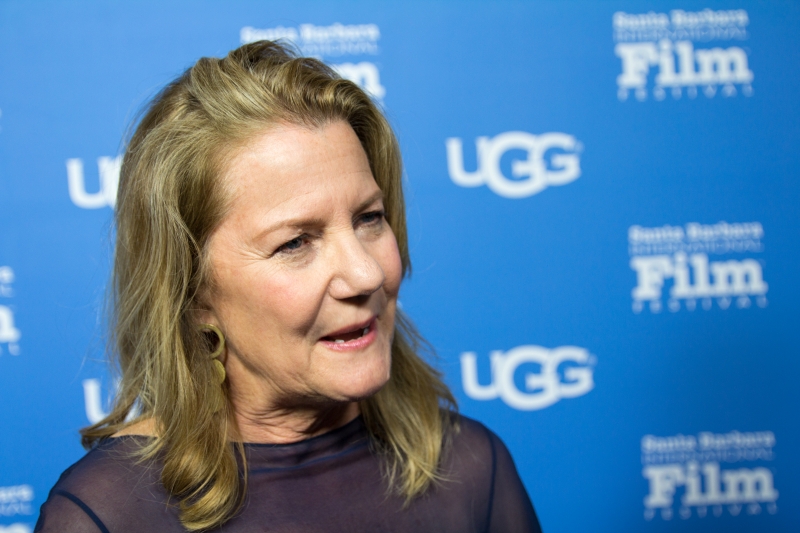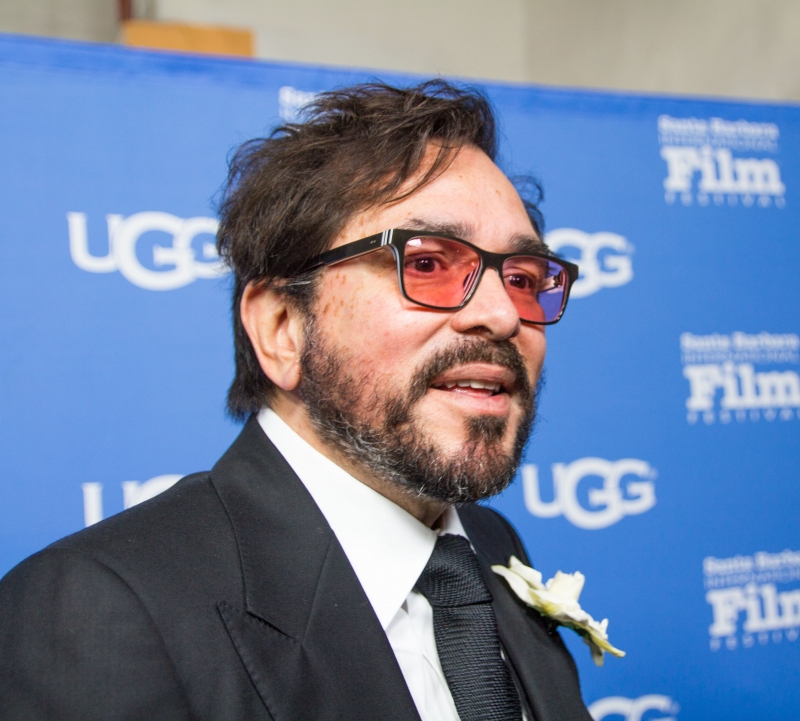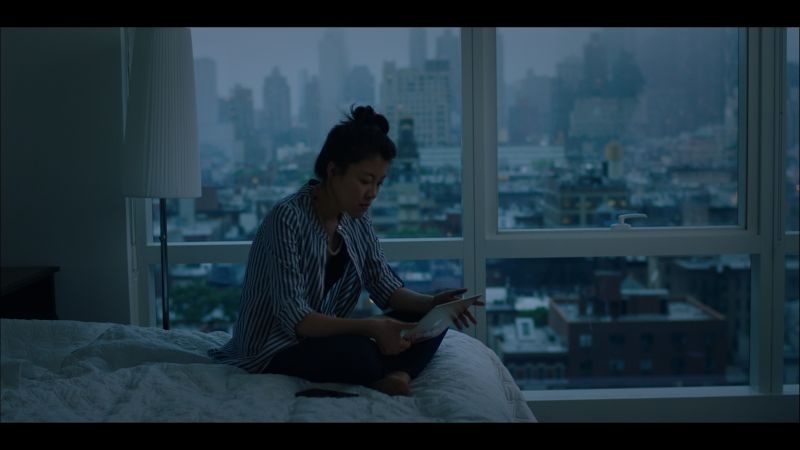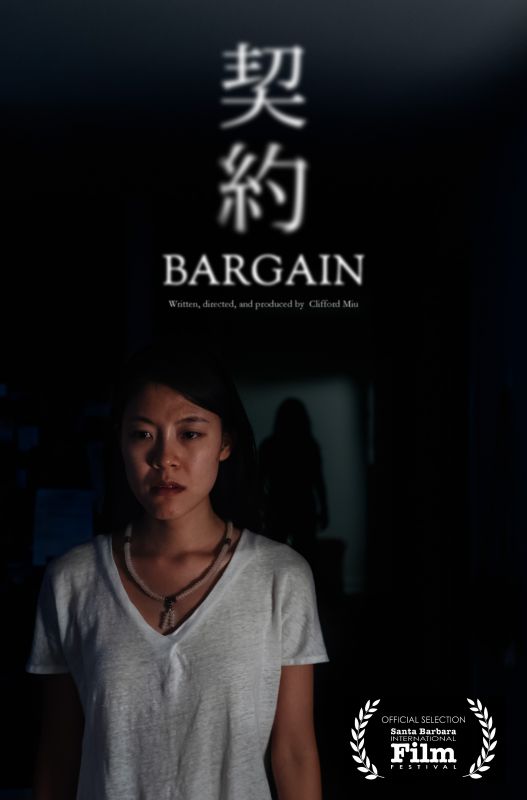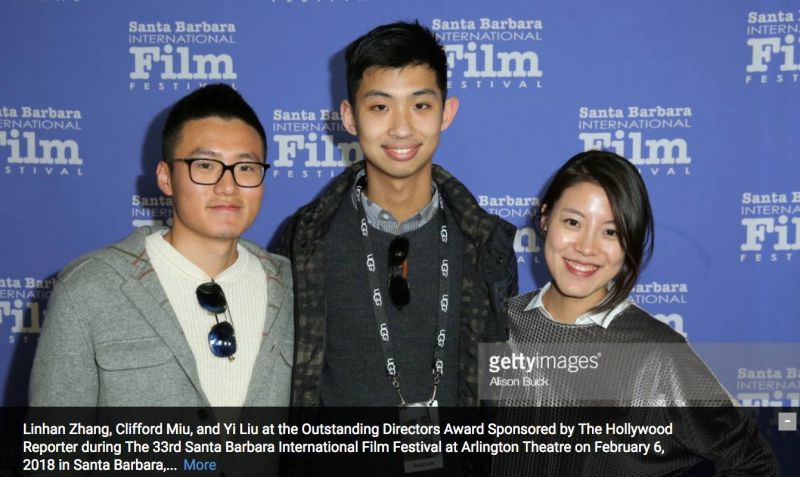|
|
||
|
Pro Tools
FILMFESTIVALS | 24/7 world wide coverageWelcome ! Enjoy the best of both worlds: Film & Festival News, exploring the best of the film festivals community. Launched in 1995, relentlessly connecting films to festivals, documenting and promoting festivals worldwide. We are sorry for this ongoing disruption. We are working on it. Please Do Not Publish until this message disappears. For collaboration, editorial contributions, or publicity, please send us an email here. User login |
Santa Barbara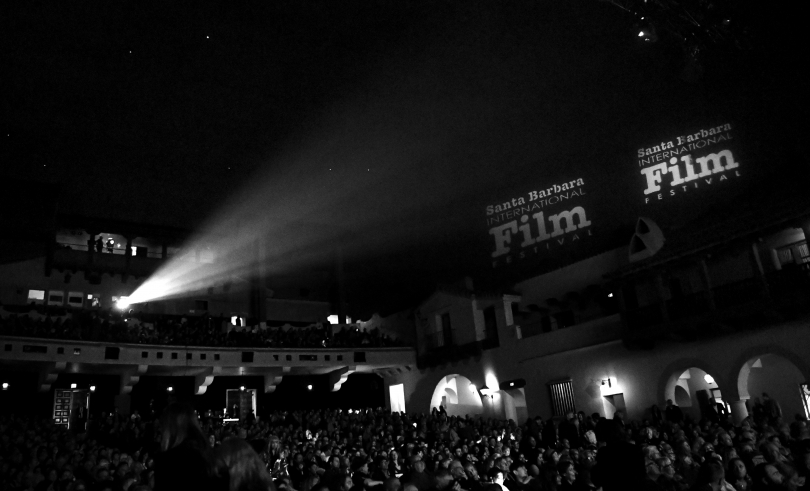
SBIFF is a 501(c)(3) non-profit arts and education organization dedicated to making a positive impact utilizing the power of film. SBIFF is a year-round organization that is best known for its main film festival that takes place each year in February. Over the past 30 years the Santa Barbara International Film Festival has become one of the leading film festivals in the United States – attracting 90,000 attendees and offering 11days of 200+ films, tributes and symposiums. We bring the best of independent and international cinema to Santa Barbara, and we continue to expand our year-round operation to include a wide range of educational programming, fulfilling our mission to engage, enrich and inspire our community through film.
In June 2016, SBIFF entered a new era with the acquisition of the historic and beloved Riviera Theatre. The theatre is SBIFF’s new home and is the catalyst for our program expansion. This marks the first time that Santa Barbara has had a 24/7 community center focused on the art of film and is an incredible opportunity to expand our mission of educational outreach. Particularly important to SBIFF is making available high quality learning opportunities for underserved and vulnerable populations. Our programs and reach are more robust than ever before.  Marton Scorsese and Sir Ben Kingsley speak about cinema, each other and HUGO (2011)
Martin Scorsese wins The American Riviera Award at the 27th Santa Barbara Film Festival.. “We have to keep this wonderful life-sustaining conversation going with cinema”.
On the night of January 30, 2012, the legendary director Martin Scorsese, whose latest film HUGO (2012) is nominated for an Oscar for Best Picture, was awarded The American Riviera Award at the 27th Santa Barbara Film Festival (SBIFF) by celebrated actor Ben Kingsley. Before receiving the award, Martin sat in the Arlington Theater with a few hundred devoted friends, family and fans to speak at length about his past, present and future as a love affair with cinema and his life as a filmmaker. I spoke with Ben just before he was about to award Martin. “Tonight you’re going to be presenting an award to the great Scorsese. How does that feel?” Ben replied: “Well, when I think of the number of men or women that could be presenting this award, people who owe their greatest moments on screen to him, people who owe their careers to him…I’m the voice of a very extraordinary group of actors so I have to speak for all of them and hope that message gets through because we all love him.. And I don’t exaggerate… We LOVE him! And it’s a great honor!” When asked why the actors Martin has worked with stay loyal to him and work with him throughout their careers, Ben replied: “My relationship to Martin is growing. It’s my second film with him and I hope that, you know, we have a future together. We seem to really understand one another. The conversations we have on set are mostly stories that we tell each other. The conversations we have about the work is two or three words…Tiny adjustments, a tiny nudge here, a tiny push there because that is the way he works. That’s him. It’s the non-audition, the gentle vision. You just be in front of the camera.” Sir Ben Kingsley’s eloquent speech and tribute to Martin Scorsese had both of them in tears as Ben presented the American Riviera Award to Martin. Ben: “My dear, Martin. We happy few hundred will never ever be in the same room with you again all of us. This is a remarkable evening and I know that your words and your presence and your ability to touch the child within or the original within us will open and blossom and resonate for these happy hundreds and myself for days, for weeks, months and for years. I’m fully aware that the very greatest of my peers, as we’ve seen, owe some of their finest and most indelible moments on the screen to you, Marty. And some of them owe their very careers to you, Marty. We were privileged this evening to see your mum and dad and I had a thought whilst again watching you, and I’ve spent treasured moments with you.. When God made you he placed your ego in the most extraordinary sublime space because you are able with that prism inside your soul to see the original us, to touch the child within and to recognize it with enormous tenderness, enormous confidence and enormous compassion. Let me speak as an actor now. What differentiates you, Marty, from the other greats of your peers, is that when an actor first sits down over coffee or mineral water or dinner, you are immediately embraced by your capacity to see the original, to see the child within. The number of times the word ‘Trust’ has come up this evening, that is exactly what it is. I have had the privilege of talking about you, Marty, for the past few months, and I’ve had occasion, when asked ‘What is it like to be directed by Mr. Scorsese?’ and I answer: “He directs like a lover.” Because when you are loved you are beheld be an all seeing, all knowing eye that has your every move, your ever gesture, and your every contribution as an actor as the highest priority. I might also add that once you have given us, the fortunate blessed actor the role, the audition stops there and our wonderful dance begins and you allow your actor to fully inhabit that space between action and cut when the actor is at his most private and most public. You see the child within and you see the original within. When I worked with you Marty, I was so confident that I could recall a childhood memory. Not easy for me because I had an unhappy childhood and I found delving into quite difficult {….} BEN cont: “And again, it’s the child within, it’s the never take ‘no’ for an answer. I think of you Marty that your films are so life enhancing that when we leave the theater the original us and the original child within says to his or herself ‘I’ll never take no for an answer because he doesn’t.’ In the caves of Lascaux in France there are drawings of bison and antelope and mammoth and hunters. Somewhere on the cave of that wall is the hand of the Artist traced on the cave wall, the imprint 30,000 years ago of ‘I am here, a human’, and I am confident to know that through your great contribution to our culture and our lives that your handprint is on everyone’s heart in this room and millions of people outside of this room and for them and for all my fellow actors, and for all who love you it my profound honor to be the man chosen to present to you The Riviera Award of America.” An emotional Martin came to take the award from Ben and they embraced. Then Martin made the following moving speech about his honor to accept the reward and shared his experience of working with Ben on HUGO and why this his latest film is his tribute to the art of cinema at large. Martin: “Thank you so much Santa Barbara for this award and also a great thanks to Sir Ben Kingsley. I must say working with Ben, particularly Meliies, when they say the actor inhabits a role, it’s true but not to the extent that I’ve experienced as I have with Ben, particularly in the case with the character George because once he got the look…once he had the makeup, once you add the posture and the body language and even adding certain parts of his body to make him stooped and even at the end when he says: ‘Come dream with me’ where he’s alive again and young, we were really in a sense hanging out with George. He was real, very very real. In fact, during the shoot, in the tent you came and sat down next to me and Helen and later you go up and went to work and my wife said: ‘Who is that?’ She thought it was George but it was Ben. And really it was that extraordinary. I felt a warmth and love for him that was George that was really remarkable. … George and Isabelle, they bonded together and it was really quite moving and the real gift, Ben, is to have worked twice with you so far. That’s the real gift. And on HUGO, so I thank you so much again.” MARTIN cont’d: “I had seen many of the Melies films over the years. We had looked over a lot of the Melies films as part of a DVD set. He had made over 500 films, I think from about 1887-1913. There are maybe more than 250 that exist now. In fact, in Paris a few weeks ago the head of the cinematic told me they had found four more. There’s so many they are still turning up, but the funny thing about these films when you look at them as they didn’t seem old in a way. They seemed new, particularly when I showed them to my daughter in France. They thought they were new. They look new because they have an exciting quality to them. Some people have described them as if an old manuscript had come to life. But I think seeing these films that were made over 100 years ago still appearing new, it reminds me of when you look at a film repeatedly and the perception is there, if you have the perception to experience it again as new, it is like a new film, it is something completely new. That’s why cinema keeps, in a sense, being rich. When you see a film you’ll see something twenty years later but somehow it’s changed.” MARTIN cont’d: “Everything we did on HUGO was new for me. First time I went to 3D of course, first time I worked on high definition, first time I had children as characters that were pretty much in every scene, and the first time I worked with dogs. You saw the dog there. He’s a Doberman so he cares kids. And it was the first time I worked with Sacha Baron Cohen because he’s somewhat unpredictable. But really the added element of the depth of the 3D and what I wanted to do was get into the child’s mind. When you’re young you experience things in a way and when you get older you have that memory of it. And when you go back as an adult it’s not the same. As a child you remember it in another way; bigger, much more imposing and that sort of thing. And I wanted to create a Paris like that, that was HUGO’s memory in a way, almost like going inside a snow-globe that you want to live inside of and that’s where the 3D really came to the fore because it created a sense of immersion in that world particularly with the actors and moving the actors up front. It made the characters more accessible to you, the narrative more accessible and got you involved in a much more full way than normal to me. I wish to mention 3D is almost like a living sculpture where you can walk around a sculpture and look at it. In any event, the film does have very personal meanings for me. It was pointed out that it was very personal for me but I hadn’t realized. I go back to when I first started saw films I was talking earlier about when I had asthma and my father was taking me to the movies.” MARTIN cont’d: “My father was very, late 1940’s he was working in the garment district and late night he’d come home, it was a different kind of lifestyle. So he started taking me to the movies and he never said anything to me about the movies, he’d just take me, show me, sit down, watch the picture and whether it was ‘Roy Rogers’ or ‘Sunset Boulevard’, ‘Rear Window’, amazing movies and he never said anything! So here we were going through all these emotions and the psychological impact of these extraordinary stories and there was this quietness that really in a way, that formed that bond. We had experienced something together and that was our language. That was our language and for me that’s sort of a bond of love that you experience and share amongst others when you have a wonderful experience with cinema. So, in a way, for me I guess the impulse was there for me to make HUGO. And maybe to make all these movies I’m still taking to him in a way. And now I show films to my daughter and the experience is the same in a way, the conversation is still going on I guess. Interesting when you watch a picture with kids they don’t really know when they were made. Really watching a film with them is like looking at them watching the films and that’s where the magic is and interestingly enough, I always felt that while making HUGO, we really found ourselves walking on a tightrope. We were walking out and we turned around and it was too late to go back and we had to invent as we went along.” MARTIN cont’d: “On HUGO, the first thing we worried was about the editing but this idea of moving forward and yet the story is moving back to the origins of cinema and that’s something I find remarkable because with all this new technology, which kept changing all the time. We were on that tightrope almost rushing toward the future and yet we wound up right back at the origins of cinema because he (Melies) was doing the same. They were all doing the same back at that time, but him more than others. So, for me, I think of it as an ongoing conversation between the past and the present, between the Melies and the Lumiere Brothers and people who were working at that time and the filmmakers of today and in terms of film preservation where would be without the examples of the Melies and or Renoir, Satyajit Ray, Griffith and so that’s the main reason why I’m restoring and preserving so many pictures or trying to anyway. If we ignore the past and let it deteriorate what would happen? I mean, there will be nothing really. Nowhere. No past, no future, just maybe a grey sad impoverished present. So we have to keep this wonderful life-sustaining conversation going with cinema. And I thank you so much. Thank you!
-Written and transcribed by Vanessa McMahon, February 7th, 2012.
PHOTOS BY VANESSA MCMAHON
10.02.2012 | Santa Barbara's blog Cat. : actor America Arlington Artist Ben Kingsley Cinema of the United States Director each other and HUGO (2011) Entertainment Entertainment Film forward France George Head Hugo Isabelle Lunch of Blood Martin Scorsese Martin Scorsese Marton Scorsese and Sir Ben Kingsley speak about cinema Memory Next Magazine Oscar Over Paris Person Career Private Roy Rogers Sacha Baron Cohen Santa Barbara Technology Technology the 27th Santa Barbara Film Festival The American Riviera Award Vanessa McMahon You Got to Move Interviews
|
LinksThe Bulletin Board > The Bulletin Board Blog Following News Interview with EFM (Berlin) Director
Interview with IFTA Chairman (AFM)
Interview with Cannes Marche du Film Director
Filmfestivals.com dailies live coverage from > Live from India
Useful links for the indies: > Big files transfer
+ SUBSCRIBE to the weekly Newsletter DealsUser imagesAbout Santa Barbara The Santa Barbara International Film Festival has star wattage and a wealth of premieres in a Mediterrean-style city by the sea.
Blogging here with dailies: View my profile Send me a message The EditorUser contributions |



















